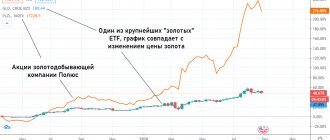Definition
Liabilities _
) are one of the three sections of the balance sheet besides assets and equity. This section reflects the company's debt obligations to its creditors that arose as a result of previous operations. By their economic essence, they, like equity capital, are a source of financing the company’s assets. In the event of default on debt obligations, creditors have the right to claim the company's assets to the extent of the outstanding debt to them.
Liabilities also include advances received that were paid for future goods, work or services. Since this amount has not yet been earned, it may be recorded as deferred income or customer deposits.
Fixation Features
When it becomes necessary to record obligations in reports, then for this you need to enter into the documents exactly those amounts that arise from the company’s reports and are recognized as correct. But there is an exception to this rule. When making settlements with budgetary organizations and banks, you should initially agree on the amounts with the specified structures.
Debt obligations must be included in the principal amount. There are also exceptions to this rule. If you need to display loans and credits, then this should be done together with the amount of interest on existing debts.
If the loan was issued in a foreign currency, then when reporting, it should be converted into Russian rubles and entered into the documentation in rubles.
When calculating income tax, it is necessary to start from the profitability of liabilities. All interest accrued on loans should be classified as non-operating income and taken into account for tax purposes.
A contract is one of the forms of obligations
Structure of liabilities in the balance sheet
Liabilities have the same classification structure as assets: current liabilities and non-current liabilities. They are reflected in the balance sheet in order of increasing due date for their payment.
Current responsibility
Current liabilities are those that must be paid within 12 months or the operating cycle if its duration is more than one year. Their occurrence is usually associated with the use of current assets (English Current Assets), the creation of another current liability or the provision of any services.
Typically this section of the balance sheet includes the following items.
- Debt to banks
. Represents the amount of short-term debt owed to banks, for example, under a bank line of credit. - Accounts payable
. This is the amount of debt owed to suppliers of products and services that were provided on credit, but the payment period for which has not yet arrived. - Salaries, rent, taxes and utilities payable
. This reflects the amounts that the company must pay to its employees, landlords, government, etc. - Accrued liabilities (accrued expenses)
. These liabilities arise because expenses are incurred in a period prior to the period in which they are paid. This item covers a wide variety of expenses, for example, advances received from clients, dividends payable, arrears of accrued wages, etc. - Bills payable (short-term loans)
. These are the amounts that the company is obliged to pay to the creditor, which usually also includes the payment of interest. - Deferred income (customer prepayments)
. These are payments received from customers for goods and services that the company has not yet provided or has not yet begun to incur any costs associated with providing them. - Dividends payable
. It arises in a situation where a company has already announced dividends, but has not yet paid them to its owners. - The current portion of long-term debt
. This item reflects the portion of long-term debt that falls due in the next 12 months. In theory, any associated premiums or discounts should also be classified as current liabilities. - Current portion of finance lease obligations
. This is part of the long-term finance lease payments that are due over the next year.
long term duties
Long-term liabilities are those that must be repaid later than 12 months or after the operating cycle, if it is longer than one year. They should be reflected as the present value of future payments.
The most common examples of long-term liabilities are.
- Bills payable (long-term loans).
This is the amount that the company is required to pay the lender, which usually includes interest. - Long-term debt (bonds payable).
This is long-term debt minus the current portion. - Deferred tax liabilities.
They arise as a result of discrepancies between accounting and tax accounting standards in the case when the amount of tax payable in accounting exceeds the amount of tax payable in tax accounting. In other words, it is the amount of tax that the company will have to pay in the future. - Employee pension plan.
This is the company's obligation to pay pension benefits to its retired and active employees. Payments from this fund begin upon the employee's retirement. This item reflects the additional amount the company must contribute to its current pension fund to meet its future pension obligations. - Long-term finance lease obligations.
Basic Concepts
Every legal entity, regardless of the type of activity, has obligations. They are usually divided into long-term and short-term (or current). From the name it is already clear that division is carried out on a temporary basis.
Current liabilities are those debts that the company needs to pay off within the next year. Their elimination is carried out using current resources, which include:
- Dividends intended for payment.
- Tax payments.
- Bills that are classified as short-term.
- Income received as an advance payment, but not worked out, etc.
Current resources have the main difference from long-term ones in that, theoretically, an enterprise could use them to carry out daily activities. Another distinctive feature of them is that they are converted into cash equivalent and spent in a short time. Most often this is a calendar year. If their repayment is postponed, then they become long-term. In this case, a penalty will be charged on the total amount.
This financial analysis was carried out in accordance with the Federal Law of October 26, 2002 N 127-FZ “On Insolvency (Bankruptcy)” and the Rules for Conducting a Financial Analysis by an Arbitration Manager, approved by the Decree of the Government of the Russian Federation of June 25, 2003 N 367. The analysis was carried out on based on the financial statements of Zvezda JSC for the period from 01.01.2014 to 31.12.
2015 (8 quarters). During the analysis, the key coefficients of the financial and economic activities of Zvezda JSC were calculated (indicators of solvency, financial stability and business activity), and a final conclusion was made regarding the financial position of the debtor. The activities of Zvezda JSC are classified in the Communications industry (class according to OKVED - 64), which was taken into account in the qualitative assessment of the values of financial indicators.
The main indicators of assets and liabilities of Zvezda JSC are given according to the data contained in the financial statements (Form No. 1 “Balance Sheet”) and the debtor’s accounting registers.
| Index | Indicator value | Change during the analyzed period | ||||||
| in thousand rubles | in % to balance currency | thousand rubles (group 5-group 2) | ± % ((gr.5-gr.2) : gr.2) | |||||
| 31.12.2013 | 03/31/2014 – 06/30/2015 (on average) | 30.09.2015 | 31.12.2015 | at the beginning of the analyzed period (December 31, 2013) | at the end of the analyzed period (December 31, 2015) | |||
| 1 | 2 | 3 | 4 | 5 | 6 | 7 | 8 | 9 |
| Total assets (liabilities) | 7 540 901 | 7 032 219 | 5 858 320 | 6 059 934 | 100 | 100 | -1 480 967 | -19,6 |
| Assets | ||||||||
| Adjusted non-current assets | 5 636 411 | 5 208 358 | 4 538 792 | 4 291 369 | 74,7 | 70,8 | -1 345 042 | -23,9 |
| Long-term accounts receivable | – | – | – | – | – | – | – | – |
| Short-term receivables* | 1 736 668 | 1 437 628 | 1 133 825 | 828 831 | 23 | 13,7 | -907 837 | -52,3 |
| Current assets** | 1 904 490 | 1 823 861 | 1 319 528 | 1 768 565 | 25,3 | 29,2 | -135 925 | -7,1 |
| Liquid assets | 1 763 944 | 1 719 371 | 1 231 566 | 1 699 832 | 23,4 | 28,1 | -64 112 | -3,6 |
| including: the most liquid current assets | 23 130 | 279 671 | 97 704 | 870 965 | 0,3 | 14,4 | 847 835 | 37.7 times |
| Potential current assets for return | – | – | – | – | – | – | – | – |
| Passive | ||||||||
| Own funds | 1 158 284 | 1 037 409 | 823 332 | 1 186 109 | 15,4 | 19,6 | 27 825 | 2,4 |
| Liabilities, total | 6 382 617 | 5 994 810 | 5 034 988 | 4 873 825 | 84,6 | 80,4 | -1 508 792 | -23,6 |
| including: long-term obligations of the debtor | 4 785 789 | 4 214 510 | 3 140 291 | 2 691 167 | 63,5 | 44,4 | -2 094 622 | -43,8 |
| debtor's current obligations | 1 596 828 | 1 780 300 | 1 894 697 | 2 182 658 | 21,2 | 36 | 585 830 | 36,7 |
* Including goods shipped.** Excluding goods shipped.
On the last day of the analyzed period, approximately two thirds of the organization’s assets are accounted for by their non-current part (70.8%), and a third are current assets (29.2%). Over the past two years, the value of assets has decreased significantly, decreasing to 6,059,934 thousand rubles. (-1,480,967 thousand rubles). At the same time, own funds increased by 2.4%, amounting to as of December 31.
The decrease in the total assets of Zvezda JSC occurred mainly due to a decrease in the value of the following types of assets (the amount of the change and the percentage contribution of this change to the total decrease in assets is given below):
- accounts receivable – 907,837 thousand rubles. (39%)
- other non-current assets – 819,559 thousand rubles. (35.2%)
- long-term financial investments – 323,904 thousand rubles. (13.9%)
At the same time, the largest decrease in the balance sheet liabilities occurred in the following positions (the percentage contribution to the total decrease in liabilities is indicated in parentheses):
- long-term borrowed funds – 1,948,930 thousand rubles. (92.8%)
- other long-term liabilities – 150,361 thousand rubles. (7.2%)
An even greater decrease in the value of the organization’s total assets was avoided by the increase in the values of such indicators as “cash and cash equivalents” in assets and “short-term borrowed funds” in the organization’s sources of funds (liabilities), which amounted to 611,840 thousand rubles over the last two years. and 450,802 thousand rubles. respectively.
The structure of the organization's assets by main groups is presented in the diagram below. At the same time, these assets are calculated in accordance with their definitions in clause 1 of Appendix 1 to the Rules for conducting financial analysis by arbitration managers.
The value of liquid assets as of December 31, 2020 amounted to RUB 1,699,832 thousand. Over the past two years, there has been a slight decrease in the value of liquid assets of Zvezda JSC (-64,112 thousand rubles). Over the entire period under review, the amount of short-term receivables decreased by 907,837 thousand rubles, or by 52.3%.
The change during the analyzed period in total assets (liabilities), equity and liabilities of Zvezda JSC is presented in the graph below.
During the entire analyzed period, equity capital mainly grew. The value of equity as of December 31, 2015 amounted to 1,186,109 thousand rubles.
The calculation of the value of net assets of Zvezda JSC was carried out in accordance with the Procedure for determining the value of net assets, approved by Order of the Ministry of Finance of Russia dated August 28, 2014 N 84n.
| Index | Indicator value | Change | ||||||
| in thousand rubles | in % to balance currency | thousand rubles (group 5-group 2) | ± % ((gr.5-gr.2) : gr.2) | |||||
| 31.12.2013 | 03/31/2014 – 06/30/2015 (on average) | 30.09.2015 | 31.12.2015 | at the beginning of the analyzed period (December 31, 2013) | at the end of the analyzed period (December 31, 2015) | |||
| 1 | 2 | 3 | 4 | 5 | 6 | 7 | 8 | 9 |
| 1. Net assets | 1 158 181 | 1 037 369 | 823 332 | 1 186 109 | 15,4 | 19,6 | 27 928 | 2,4 |
| 2. Authorized capital | 600 000 | 600 000 | 600 000 | 600 000 | 8 | 9,9 | – | – |
| 3. Excess of net assets over authorized capital (line 1-line 2) | 558 181 | 437 369 | 223 332 | 586 109 | 7,4 | 9,7 | 27 928 | 5 |
The organization's net assets as of December 31, 2020 significantly (97.7%) exceed the authorized capital. This ratio positively characterizes the financial position of Zvezda JSC, fully satisfying the requirements of regulations for the amount of net assets of the organization. Moreover, it should be noted that net assets increased by 2.4% over the last two years.
Taking into account both the excess of net assets over the authorized capital and their increase over the period, we can talk about the good financial position of the organization on this basis. A visual change in the organization’s net assets for the analyzed period (from December 31, 2013 to December 31, 2020) is presented in the following graph.
The authorized capital remained unchanged throughout the period under review.
The table below shows the main financial results of the activities of Zvezda JSC for the period under review (from 12/31/2013 to 12/31/2015) according to the accounting forms “Report on Financial Results”.
| Index | Indicator value, thousand rubles. | Change in indicator | Average monthly value, thousand rubles. | ||||
| 1st quarter 2014 | 2nd quarter 2014 – 2nd quarter 2020 (average) | 3rd quarter 2015 | 4th quarter 2015 | thousand roubles. (gr.5 – gr.2) | ± % ((5-2) : 2) | ||
| 1 | 2 | 3 | 4 | 5 | 6 | 7 | 8 |
| 1. Net revenue | 2 934 486 | 69 122 | 760 470 | 787 651 | -2 146 835 | -73,2 | 201 176 |
| 1.1. Average monthly revenue | 978 162 | 23 041 | 253 490 | 262 550 | -715 612 | -73,2 | x |
| 2. Expenses for ordinary activities | 2 717 539 | -489 | 712 765 | 773 050 | -1 944 489 | -71,6 | 175 038 |
| 3. Profit (loss) from sales (1-2) | 216 947 | 69 611 | 47 705 | 14 601 | -202 346 | -93,3 | 26 138 |
| 4. Other income and expenses, except interest payable | 471 768 | -71 912 | 170 524 | 577 148 | 105 380 | 22,3 | 35 828 |
| 5. EBIT (earnings before interest and taxes) (3 4) | 688 715 | -2 302 | 218 229 | 591 749 | -96 966 | -14,1 | 61 966 |
| 6. Interest payable | 629 329 | -14 913 | 143 354 | 99 908 | -529 421 | -84,1 | 33 251 |
| 7. Changes in tax assets and liabilities, income tax, etc. | -31 296 | -3 407 | 22 041 | -129 064 | -97 768 | ↓ | -6 473 |
| 8. Net profit (loss) (5-6 7) | 28 090 | 9 204 | 96 916 | 362 777 | 334 687 | 12.9 times | 22 242 |
For the 4th quarter of 2020, revenue amounted to RUB 787,651 thousand. During the period under review, there was a multidirectional change in revenue (both growth and decline); the maximum value was 3,292,744 thousand rubles, the minimum – -2,512,592 thousand rubles. The graph below clearly shows the change in revenue and net profit of Zvezda JSC.
Over the last quarter, the organization not only received gross profit, but also exceeded its earnings before interest and taxes (EBIT) in the amount of 591,749 thousand rubles. The final financial result (net profit) for the period 01.10–31.12.2015 amounted to 362,777 thousand rubles.
Contingent liabilities
Contingent Liabilities
) are potentially possible obligations, the transformation of which into real ones depends on the development of certain events in the future. The most common examples of such liabilities are warranties and amounts of legal claims against the company.
It is necessary to reflect contingent liabilities on the balance sheet when there is a significant probability of their transformation into real liabilities and their amount can be accurately estimated. If the probability is remote, they should not be reflected in either the balance sheet or the notes to the financial statements. Interim positions should be disclosed in the notes to the financial statements.
- ← Balance sheet asset structure
- Balance sheet equity structure →
Regulatory and legislative acts on the topic
| Order of the Ministry of Finance of Russia dated July 2, 2010 No. 66n | Approval of the balance sheet form |
| clause 7.3 of the Concept approved by the Methodological Council for Accounting under the Ministry of Finance | On the grounds for the emergence of obligations |
| clause 19 PBU 4/99 | Definition of long-term liabilities |
| Order of the Ministry of Finance of Russia dated October 31, 2000 No. 94n | Algorithm for calculating indicators of items of long-term liabilities |








